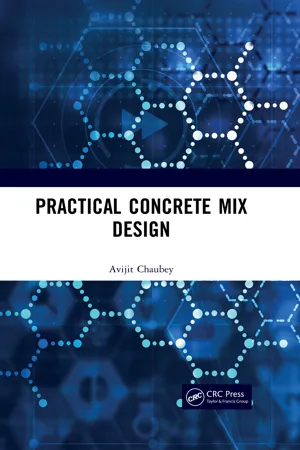
- 170 pages
- English
- ePUB (mobile friendly)
- Available on iOS & Android
Practical Concrete Mix Design
About This Book
Practical Concrete Mix Design has been compiled to help readers understand the concrete mix design methodology, including formulas and tables involved in the pertinent steps. This book helps engineers understand the mix design procedure, through illuminating every possible explanation for each step of mix design, limitations given by standards, and practical guides on tailor-making concrete to meet specific requirements. The construction industry needs engineers/experts who can reduce the costs of concrete, and thereby increase their profitability. This book shows effective methods for optimizing concrete and simultaneously achieving the desired properties of concrete. It covers why, how, and when with respect to concrete proportioning and optimization. It further provides the necessary skills for engineers to hone their skills in doing so, understanding the risks involved, and troubleshooting related problems.
Frequently asked questions
Information
1
Concrete Mix-Proportioning General Concepts
1.1 Introduction
Table of contents
- Cover
- Half Title
- Title Page
- Copyright Page
- Table of Contents
- Foreword
- Preface
- Author
- 1. Concrete Mix-Proportioning General Concepts
- 2. Proportioning Concretes: Rapid Method
- 3. ACI Method of Proportioning Concretes
- 4. DOE Method of Proportioning Concretes
- 5. BRMCA Method of Proportioning Concretes
- 6. Unconventional Proportioning Methods and Special Concretes
- 7. Optimization of Concrete
- 8. Conducting Laboratory Tests and Validation of Mixes
- Bibliography
- Index